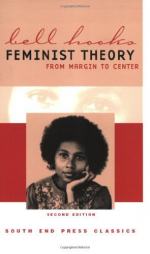
|
| Name: _________________________ | Period: ___________________ |
This quiz consists of 5 multiple choice and 5 short answer questions through Chapters 6 and 7.
Multiple Choice Questions
1. According to the author's Preface (2000), where is visionary feminist discourse increasingly talked about?
(a) Inside factories and in union meeting halls.
(b) In beauty parlors.
(c) In the corridors of the educated elite.
(d) In university sororities.
2. In the Preface (2000), what examples does the author give of the problematic status of women in contemporary society?
(a) High poverty, high divorce rates, lack of state assistance.
(b) Low job benefits, high poverty, high divorce rates.
(c) High poverty, low status of single mothers, lack of state assistance and health care.
(d) High divorce rates, low job benefits, no enough day care.
3. What major difference between white and black men does the author point out?
(a) White men were not as threatened by strong women functioning outside traditional gender roles.
(b) Black men did not trust women who worked outside the home.
(c) White men encouraged women to go to work whereas black men did not.
(d) Black men were not as threatened by strong women functioning outside traditional gender roles.
4. What was the author's initial experience in women's groups?
(a) She found solidarity with women from very different backgrounds.
(b) No one would look at her.
(c) Everyone was really open-minded.
(d) White women did not treat women of color as equals.
5. How does consumerism relate to the author's discussion of power?
(a) Feminists should tap into consumer culture to gain power.
(b) Combatting consumerism is a positive manifestation of women's power.
(c) It does not come up in her discussion at all.
(d) Feminists should not be distracted from fighting sexism by focusing on resisting consumerism.
Short Answer Questions
1. Why does the author spend time talking about the relationship between feminism and the family?
2. What must happen in order for women to create true sisterhood?
3. What must be learned in order for the feminist movement to be successful?
4. At the end of the Preface (2000), what does the author say regarding "patriarchal mass media" and feminism?
5. What does the author say about the statement: "I am a feminist"?
|
This section contains 526 words (approx. 2 pages at 300 words per page) |

|




